-
 Bitcoin
Bitcoin $82,509.8850
-2.52% -
 Ethereum
Ethereum $1,800.3816
-3.46% -
 Tether USDt
Tether USDt $0.9996
-0.02% -
 XRP
XRP $2.0537
-1.80% -
 BNB
BNB $589.5226
-1.44% -
 USDC
USDC $1.0000
0.02% -
 Solana
Solana $116.3439
-6.85% -
 Dogecoin
Dogecoin $0.1595
-5.58% -
 Cardano
Cardano $0.6479
-2.79% -
 TRON
TRON $0.2366
-0.33% -
 Toncoin
Toncoin $3.5766
-9.59% -
 UNUS SED LEO
UNUS SED LEO $9.3922
-0.34% -
 Chainlink
Chainlink $12.7758
-5.57% -
 Stellar
Stellar $0.2586
-2.92% -
 Avalanche
Avalanche $18.1038
-3.99% -
 Sui
Sui $2.2274
-5.69% -
 Shiba Inu
Shiba Inu $0.0...01219
-1.98% -
 Hedera
Hedera $0.1627
-3.05% -
 Polkadot
Polkadot $4.0427
-1.01% -
 Litecoin
Litecoin $82.8658
-2.85% -
 MANTRA
MANTRA $6.3993
1.10% -
 Bitcoin Cash
Bitcoin Cash $298.9153
-0.95% -
 Bitget Token
Bitget Token $4.4795
-2.24% -
 Dai
Dai $0.9999
0.01% -
 Ethena USDe
Ethena USDe $0.9994
-0.04% -
 Hyperliquid
Hyperliquid $11.7782
-8.21% -
 Monero
Monero $212.0245
-3.58% -
 Pi
Pi $0.5720
-14.14% -
 Uniswap
Uniswap $5.8118
-4.56% -
 Aptos
Aptos $5.0504
-4.12%
what is the primary purpose of hashing in blockchain technology
Blockchain uses hashing to create a secure, tamper-proof chain of blocks. Each block's hash links to the previous one, ensuring data integrity and enabling efficient verification by all participants.
Mar 25, 2025 at 09:07 pm

Key Points:
- Hashing ensures data integrity in blockchain. Changes to data result in drastically different hash values, immediately revealing tampering.
- Hashing enables efficient data linking in a blockchain. Each block's hash is linked to the previous block's, forming an immutable chain.
- Hashing contributes to blockchain security. Cryptographic hashing functions are computationally expensive to reverse, protecting data from unauthorized alteration.
- Hashing is fundamental to blockchain's decentralized and transparent nature. The cryptographic nature ensures trust and verifiability without central authorities.
What is the primary purpose of hashing in blockchain technology?
The primary purpose of hashing in blockchain technology is to ensure data integrity, security, and efficient linking of data blocks. It achieves this through the use of cryptographic hash functions, one-way functions that transform any input data into a unique, fixed-size string of characters, known as a hash. This process is crucial for the functionality and security of the entire blockchain system.
How does hashing ensure data integrity?
Even a tiny alteration to the input data will result in a completely different hash value. This property makes hashing extremely effective for detecting any changes or tampering with the data stored within a block. If a single bit is altered in a block's data, the resulting hash will be entirely different, instantly revealing the manipulation. This is vital for maintaining the trustworthiness of the blockchain.
How does hashing link blocks together?
Each block in a blockchain contains a hash of the previous block. This creates a chain of blocks, where each block's integrity is linked to the one before it. This linking mechanism is the foundation of the blockchain's structure, making it incredibly difficult to alter past transactions without detection. The chain of hashes acts as an unforgeable chronological record.
What are the security implications of hashing in blockchain?
The security provided by hashing is rooted in the computational difficulty of reversing the hash function. Given a hash, it is computationally infeasible to determine the original input data. This makes it practically impossible for malicious actors to alter past blocks and their associated transactions without detection. The computational cost involved acts as a significant deterrent.
How does hashing contribute to the decentralized nature of blockchain?
Hashing's role in creating a tamper-proof chain of blocks is fundamental to blockchain's decentralized nature. Because each block's integrity is verified through its hash and the hash of the preceding block, no single entity controls the blockchain. Everyone can independently verify the integrity of the chain, ensuring transparency and eliminating the need for a central authority.
What are the different types of hash functions used in blockchain?
Several cryptographic hash functions are used in blockchain technology, with SHA-256 (Secure Hash Algorithm 256-bit) being a particularly prevalent choice. Other functions, such as SHA-3 and RIPEMD-160, are also employed, each offering varying levels of security and computational efficiency. The choice of hash function is a critical design consideration for any blockchain implementation.
What is the relationship between hashing and mining in blockchain?
Mining in Proof-of-Work blockchains involves finding a nonce (a random number) that, when combined with the block's data, produces a hash meeting specific criteria (e.g., starting with a certain number of zeros). This process is computationally intensive, requiring significant resources. The successful miner adds the block to the blockchain, demonstrating the work done and securing the chain.
How does hashing impact transaction verification in blockchain?
Each transaction within a block is also hashed individually. These individual transaction hashes, along with other block data, are then combined and hashed to create the block's overall hash. This ensures that every transaction's integrity is verified, making the entire block tamper-proof. Any modification to a transaction would result in a different block hash.
What is the role of hashing in ensuring the immutability of blockchain?
The immutability of blockchain stems directly from the properties of hashing. Altering any part of the blockchain would require recalculating all subsequent hashes, a computationally infeasible task given the chain's length and the difficulty of reversing the hash function. This inherent difficulty is what makes blockchain a highly secure and trustworthy system.
How does hashing contribute to the transparency of blockchain?
The use of cryptographic hashing makes the blockchain transparent. Anyone with access to the blockchain can verify the integrity of any block by recalculating its hash and comparing it to the stored hash. This ability to independently verify data fosters trust and accountability within the system.
Common Questions and Answers:
Q: Can a hash be reversed to obtain the original data?
A: No, cryptographic hash functions are designed to be one-way functions. It's computationally infeasible to reverse a hash and retrieve the original input data.
Q: What happens if two different inputs produce the same hash?
A: This is known as a collision. While theoretically possible, the probability of collisions with strong cryptographic hash functions is extremely low, making them practically negligible for blockchain security.
Q: Are there any limitations to using hashing in blockchain?
A: While extremely secure, hashing algorithms are susceptible to advancements in computing power. Future developments in quantum computing might pose a challenge to the security of current hashing algorithms. The choice of algorithm and its security needs continuous evaluation.
Q: How does hashing relate to the concept of a Merkle Tree in blockchain?
A: Merkle Trees use hashing to efficiently summarize large amounts of data. In a blockchain, transaction hashes are grouped and hashed recursively to create a single Merkle root, efficiently representing all transactions in a block and verifying their integrity.
Disclaimer:info@kdj.com
The information provided is not trading advice. kdj.com does not assume any responsibility for any investments made based on the information provided in this article. Cryptocurrencies are highly volatile and it is highly recommended that you invest with caution after thorough research!
If you believe that the content used on this website infringes your copyright, please contact us immediately (info@kdj.com) and we will delete it promptly.
- How XRPL Utility Can Support Token Price Growth
- 2025-04-04 05:35:12
- Long-dormant Bitcoin wallets have suddenly sprung to life
- 2025-04-04 05:35:12
- ExoraPad ($EXP), an innovative AI-powered launchpad exclusively developed for the XRP Ledger (XRPL), has reached an impressive milestone
- 2025-04-04 05:30:12
- XRP Price Surge Could Enable Early Retirement for Numerous Investors
- 2025-04-04 05:30:12
- XRP Price Prediction: Will XRP Bounce From This Support Or Continue Its Descent?
- 2025-04-04 05:25:12
- As US Treasury yields hit 6-month lows, Bitcoin (BTC) price may be poised for a breakout
- 2025-04-04 05:25:12
Related knowledge
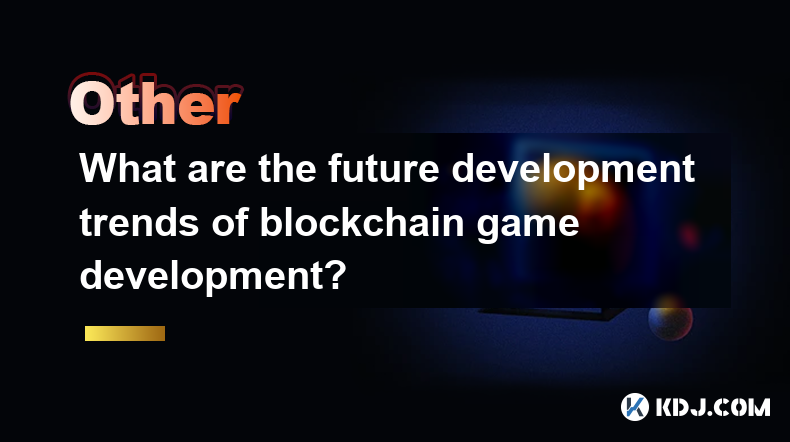
What are the future development trends of blockchain game development?
Apr 03,2025 at 05:00am
Blockchain technology has revolutionized various industries, and gaming is no exception. As we look to the future, several trends are set to shape the development of blockchain games. These trends not only promise to enhance the gaming experience but also to integrate blockchain technology more seamlessly into the gaming ecosystem. Let's explore these t...
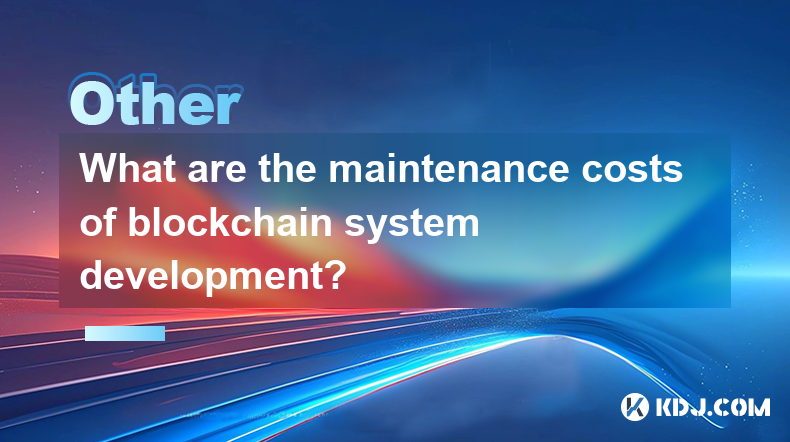
What are the maintenance costs of blockchain system development?
Apr 03,2025 at 06:07pm
The maintenance costs of blockchain system development are multifaceted and depend on various factors. These costs can include technical maintenance, security updates, infrastructure expenses, and personnel costs. Understanding these elements is crucial for anyone planning to develop or maintain a blockchain system. Technical MaintenanceTechnical mainte...
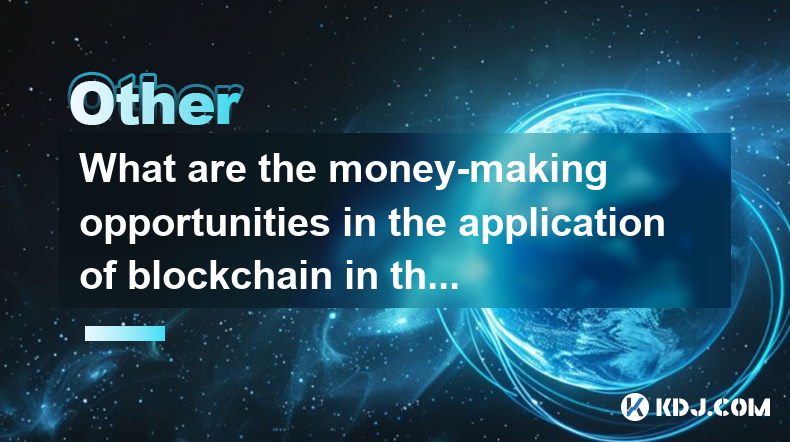
What are the money-making opportunities in the application of blockchain in the medical industry?
Apr 03,2025 at 03:35am
The integration of blockchain technology into the medical industry presents a myriad of money-making opportunities that can revolutionize healthcare systems. Blockchain's inherent characteristics, such as transparency, security, and immutability, make it an ideal solution for various medical applications. By leveraging blockchain, companies can develop ...
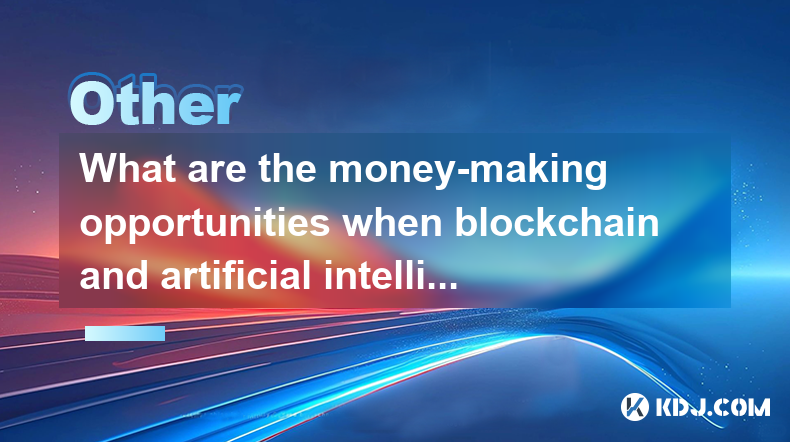
What are the money-making opportunities when blockchain and artificial intelligence are combined?
Apr 04,2025 at 01:28am
The convergence of blockchain and artificial intelligence (AI) presents a myriad of money-making opportunities within the cryptocurrency circle. This fusion leverages the decentralized and secure nature of blockchain with the analytical prowess of AI, creating innovative solutions and platforms that can generate significant revenue. From enhancing tradi...
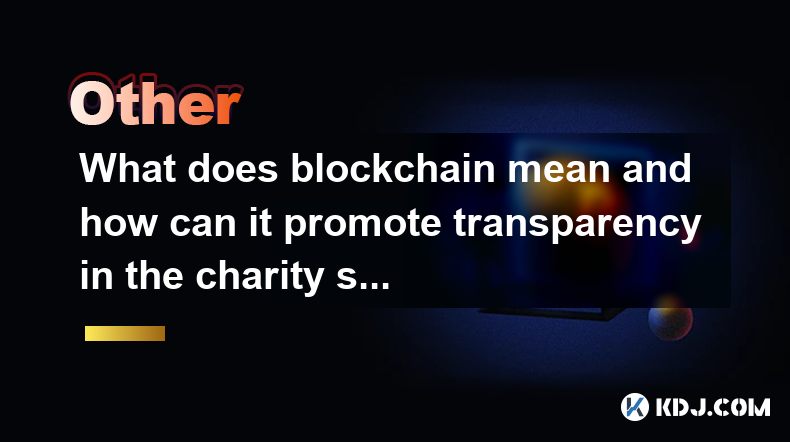
What does blockchain mean and how can it promote transparency in the charity sector?
Apr 03,2025 at 08:29pm
Blockchain technology is a decentralized, distributed ledger that records transactions across numerous computers. This ensures that the data is transparent and nearly impossible to alter retroactively. Essentially, blockchain serves as a digital ledger of all cryptocurrency transactions, enabling secure and direct exchanges without the need for intermed...
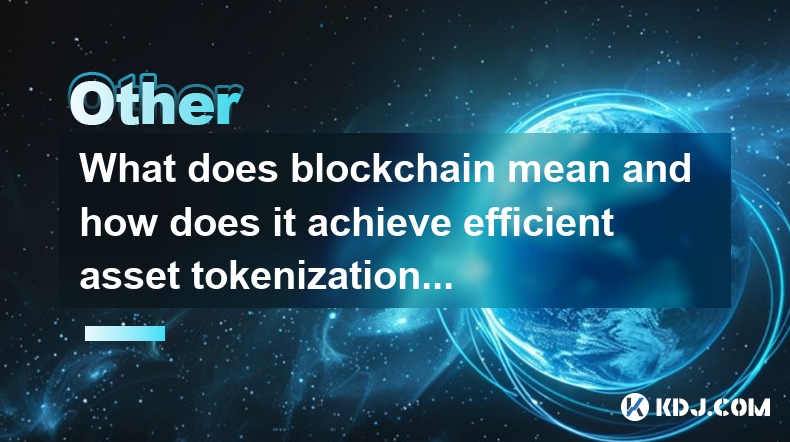
What does blockchain mean and how does it achieve efficient asset tokenization?
Apr 03,2025 at 07:57pm
Blockchain technology is a decentralized, distributed ledger that records transactions across numerous computers. It ensures that each transaction is secure, transparent, and immutable. The concept of blockchain was introduced with the launch of Bitcoin in 2009, but its applications have since expanded far beyond cryptocurrencies. At its core, blockchai...

What are the future development trends of blockchain game development?
Apr 03,2025 at 05:00am
Blockchain technology has revolutionized various industries, and gaming is no exception. As we look to the future, several trends are set to shape the development of blockchain games. These trends not only promise to enhance the gaming experience but also to integrate blockchain technology more seamlessly into the gaming ecosystem. Let's explore these t...

What are the maintenance costs of blockchain system development?
Apr 03,2025 at 06:07pm
The maintenance costs of blockchain system development are multifaceted and depend on various factors. These costs can include technical maintenance, security updates, infrastructure expenses, and personnel costs. Understanding these elements is crucial for anyone planning to develop or maintain a blockchain system. Technical MaintenanceTechnical mainte...

What are the money-making opportunities in the application of blockchain in the medical industry?
Apr 03,2025 at 03:35am
The integration of blockchain technology into the medical industry presents a myriad of money-making opportunities that can revolutionize healthcare systems. Blockchain's inherent characteristics, such as transparency, security, and immutability, make it an ideal solution for various medical applications. By leveraging blockchain, companies can develop ...

What are the money-making opportunities when blockchain and artificial intelligence are combined?
Apr 04,2025 at 01:28am
The convergence of blockchain and artificial intelligence (AI) presents a myriad of money-making opportunities within the cryptocurrency circle. This fusion leverages the decentralized and secure nature of blockchain with the analytical prowess of AI, creating innovative solutions and platforms that can generate significant revenue. From enhancing tradi...

What does blockchain mean and how can it promote transparency in the charity sector?
Apr 03,2025 at 08:29pm
Blockchain technology is a decentralized, distributed ledger that records transactions across numerous computers. This ensures that the data is transparent and nearly impossible to alter retroactively. Essentially, blockchain serves as a digital ledger of all cryptocurrency transactions, enabling secure and direct exchanges without the need for intermed...

What does blockchain mean and how does it achieve efficient asset tokenization?
Apr 03,2025 at 07:57pm
Blockchain technology is a decentralized, distributed ledger that records transactions across numerous computers. It ensures that each transaction is secure, transparent, and immutable. The concept of blockchain was introduced with the launch of Bitcoin in 2009, but its applications have since expanded far beyond cryptocurrencies. At its core, blockchai...
See all articles






















































































